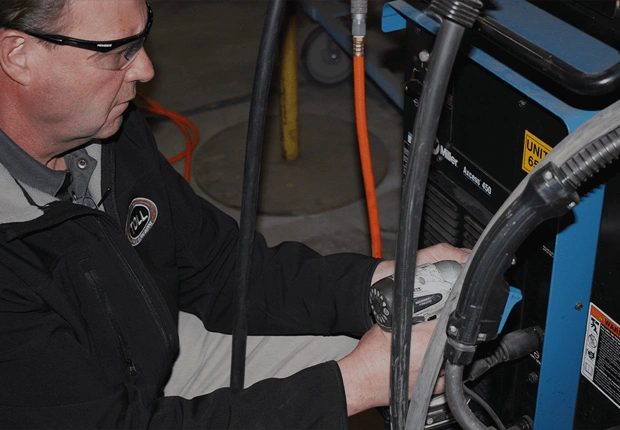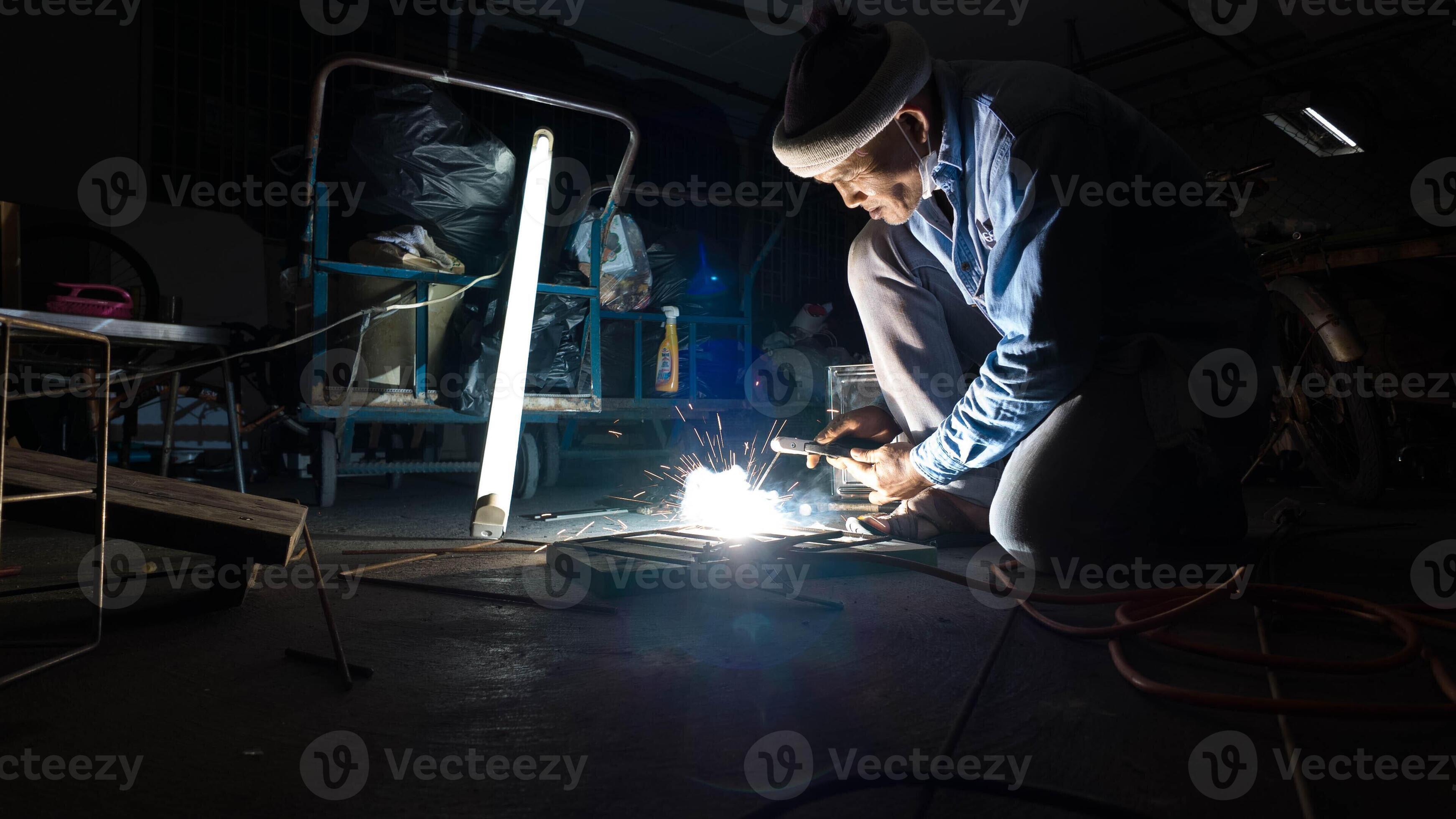Usual Welding Repair Issues and How to Address Them Effectively
Welding fixings frequently run into a variety of issues that can threaten the stability of the final product. Typical troubles include insufficient penetration, porosity, and imbalance, to name a few. Each defect offers special difficulties that require specific methods for resolution. Comprehending these issues is necessary for welders intending to enhance their skills and end results. This discussion will explore these usual welding repair work concerns and effective approaches to resolve them.
Inadequate Infiltration
Poor infiltration takes place when the weld steel stops working to totally fuse with the base product, leading to weak joints and prospective architectural failures. This issue usually originates from inadequate warm input, wrong electrode angle, or improper welding rate. Welders may experience poor infiltration due to a miscalculation of the essential parameters for a certain material thickness or kind. Additionally, contamination on the base material's surface area can impede effective bonding, aggravating the trouble. To resolve inadequate infiltration, welders must guarantee appropriate settings on their devices and keep a tidy job surface area. Normal examination of welds is recommended to determine any type of deficiencies early, enabling timely modifications and the avoidance of compromised architectural stability in bonded settings up.
Porosity
Porosity is a common issue in bonded joints that shows up as tiny gas bubbles trapped within the weld metal. This flaw can compromise the honesty of the weld, leading to lowered stamina and prospective failure under tension. Montana Mobile Welding and Repair Fabrication. Porosity generally arises from contamination, moisture, or inappropriate welding methods, which permit gases to escape right into the liquified weld pool. To address porosity, welders need to assure correct surface area preparation, preserve a clean working setting, and utilize appropriate welding specifications. Additionally, selecting the ideal filler material and protecting gas can alleviate gas entrapment. Routine inspection and screening of welds can assist recognize porosity early, assuring timely rehabilitative actions are taken, therefore protecting the quality and reliability of the welded framework
Imbalance
Imbalance in welding can arise from numerous aspects, including improper arrangement and thermal growth. Recognizing the source is essential for reliable resolution. A number of modification strategies are offered to realign elements and assure structural stability.
Sources of Imbalance
Welding misalignment commonly stems from a variety of underlying problems that can endanger structural honesty. One key reason is improper fit-up of components prior to welding, which can lead to spaces and uneven surfaces. Variants in thermal expansion throughout the welding procedure can additionally result in distortion, specifically if the materials being joined have different coefficients of development. Additionally, insufficient clamping and fixturing may stop working to hold parts securely in location, leading to activity during welding. Poorly kept devices, including welding devices and devices, might present incongruities in the weld bead, additional adding to misalignment. Ultimately, operator error, stemming from inadequate training or experience, can additionally play a substantial duty in developing misaligned welds.
Correction Methods Offered
Dealing with imbalance properly needs a combination of corrective methods customized to the specific problems handy. One typical method is using jigs or fixtures to hold elements in the appropriate position throughout welding, guaranteeing constant positioning. Additionally, pre-heating the materials can assist lower distortion and boost fit-up. For significant misalignment, mechanical realignment methods, such as utilizing hydraulic jacks or clamps, can be utilized to remedy the position before welding. Post-weld warmth treatment may additionally be essential to soothe stress and anxieties triggered by misalignment. Careful evaluation and modification during the setup stage can prevent misalignment concerns from becoming substantial problems, advertising a smoother welding process and enhancing overall architectural stability.
Distortion
Distortion is a common difficulty in welding that can emerge from different elements, including uneven home heating and cooling. Comprehending the reasons of distortion is important for applying reliable avoidance methods. Resolving this concern not only boosts architectural integrity yet likewise enhances the general high quality of the weld.
Reasons of Distortion
When subjected to the intense heat of welding, materials commonly undergo changes that can result in distortion. This sensation primarily emerges from thermal growth and contraction throughout the welding procedure. As the weld location warms up, the material increases; upon air conditioning, it contracts, which can develop inner stresses. On top of that, irregular heating across a work surface can intensify these anxieties, causing warping or flexing. The kind of material additionally plays a substantial function; steels with varying thermal conductivity and coefficients of expansion might react differently, bring about unforeseeable distortions. Inadequate joint layout and inadequate fixturing can add to misalignment during welding, raising the chance of distortion. Comprehending these causes is necessary for efficient welding repair service and avoidance approaches.
Prevention Techniques
Efficient avoidance methods for distortion throughout welding concentrate on managing warmth input and ensuring proper joint layout. Preserving a constant warmth input assists to reduce thermal development and tightening, which can bring about distortion. Utilizing methods such as pre-heating the work surface can also decrease the temperature level slope, advertising consistent heating. Furthermore, selecting proper joint layouts, such as T-joints or lap joints, can enhance security and reduce anxiety focus. Implementing correct fixturing to protect the workpieces in location further aids in keeping placement throughout the welding procedure. Staggered welding sequences can disperse warm a lot more evenly, preventing localized distortion. By applying these strategies, welders can significantly decrease the probability of distortion and enhance the total high quality of their welds.
Splitting
Fracturing is a common issue come across in welding repairs, typically arising from numerous elements such as incorrect air conditioning rates, material selection, or insufficient joint prep work. The event of cracks can greatly compromise the integrity of the weld, causing prospective failings throughout procedure. To resolve this concern, welders need to initially examine the root triggers, guaranteeing that products work and suitably picked for the certain application. Furthermore, controlling the cooling rate throughout the welding process is necessary; fast air conditioning can induce anxiety and lead to cracking. Correct joint style and preparation likewise add to reducing the danger. Carrying out these approaches can improve weld quality and sturdiness, eventually minimizing the chance of breaking in finished weldments.

Insufficient Combination
A considerable problem in welding repairs is insufficient fusion, which occurs when the weld metal does not appropriately bond with the base Montana Mobile Welding and Repair Belgrade product or previous weld passes - Montana Mobile Welding and Repair Fabrication. This defect can cause weak points in the joint, potentially jeopardizing the stability of the welded structure. Aspects contributing to insufficient fusion consist of not enough warm input, improper welding technique, and contamination of the surfaces being signed up with. To resolve this problem properly, welders need to assure correct pre-weld cleansing and surface area prep work, along with change their welding criteria to achieve adequate penetration and fusion. Normal inspection throughout the welding procedure can also help determine insufficient combination early, enabling timely corrective measures to enhance the total high quality of the weld
Overheating
While welding repairs can improve structural stability, overheating presents a considerable challenge that can bring about product deterioration. Too much warm throughout welding can modify the mechanical residential or commercial properties of steels, leading to reduced toughness, boosted brittleness, and warping. This phenomenon is especially important in high-stress applications where structural reliability is paramount. Recognizing overheating can entail visual inspections for discoloration or distortion, along with keeping track of temperature throughout the welding procedure. To alleviate the dangers related to overheating, welders must utilize suitable methods, such as regulating heat input, changing traveling rate, and utilizing suitable filler products. Furthermore, executing pre- and post-weld warmth therapies can help bring back product residential or commercial properties and enhance the general high quality of the repair, ensuring long-lasting efficiency and safety.
Frequently Asked Questions
What Are the Common Indications of a Welding Flaw?

How Can I Examine My Welds for Quality?
To check welds for high quality, one can make use of visual assessments, ultrasonic testing, and radiographic methods. Each strategy ensures structural integrity, identifies flaws, and verifies adherence to specified requirements, inevitably boosting the dependability of the welded joints.
What Safety Precautions Should I Take While Welding?
When welding, one ought to prioritize safety and security by using suitable personal protective tools, guaranteeing proper air flow, securing flammable products away, maintaining a tidy work area, and recognizing surroundings to stop mishaps and injuries.
Can I Repair a Weld Without Redoing the Entire Joint?
Fixing a weld without remodeling the entire joint is feasible, depending on the damages (Belgrade Fabrication). Methods such as grinding, adding filler product, or making use of a welding procedure can properly deal with details flaws while protecting the surrounding framework
What Equipment Are Essential for Reliable Welding Repairs?
Crucial tools for effective welding repairs include a welding machine, wire brush, mill, protective gear, clamps, and filler products. Each device plays a vital role in ensuring top quality and security throughout the repair procedure. Porosity usually develops from contamination, wetness, or inappropriate welding methods, which permit gases to leave into the molten weld pool. Improperly conserved tools, including welding machines and tools, might present disparities in the weld bead, more contributing to misalignment. When subjected to the extreme warmth of welding, products frequently undertake adjustments that can lead to distortion. Cracking is an usual problem come across in welding repair services, commonly resulting from different aspects such as inappropriate air conditioning prices, material option, or insufficient joint prep work. A considerable problem in welding repair services is insufficient fusion, which takes place when the weld steel does not appropriately bond with the base product or previous weld passes.